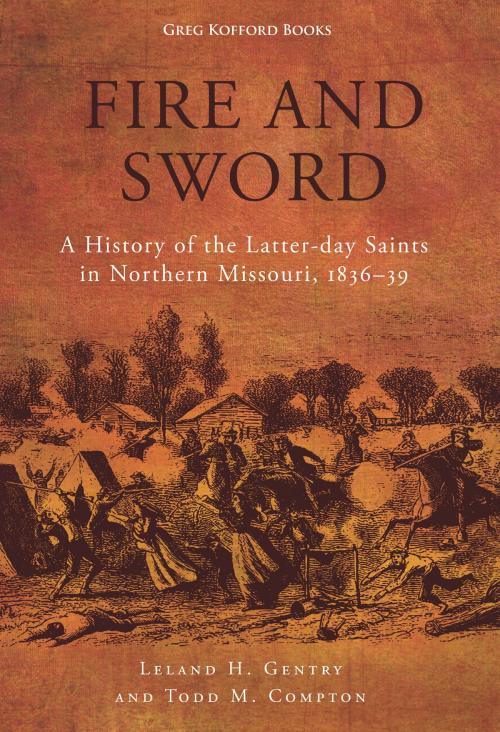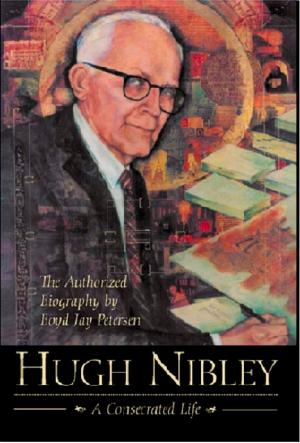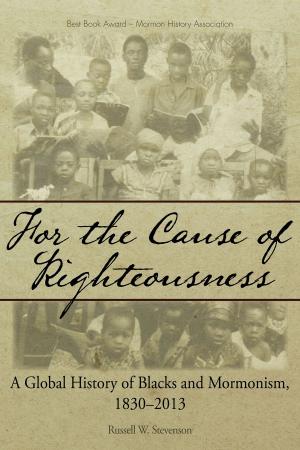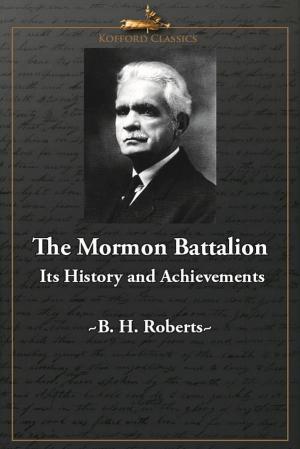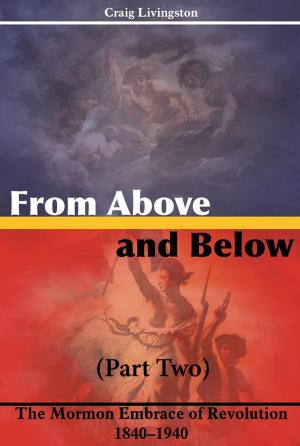Fire and Sword: A History of the Latter-day Saints in Northern Missouri, 1836-39
Nonfiction, Religion & Spirituality, Christianity, Denominations, Mormonism, History, Americas, United States, 19th Century| Author: | Leland Homer Gentry, Todd M. Compton | ISBN: | 1230002741192 |
| Publisher: | Greg Kofford Books | Publication: | October 25, 2018 |
| Imprint: | Language: | English |
| Author: | Leland Homer Gentry, Todd M. Compton |
| ISBN: | 1230002741192 |
| Publisher: | Greg Kofford Books |
| Publication: | October 25, 2018 |
| Imprint: | |
| Language: | English |
Many Mormon dreams flourished in Missouri. So did many Mormon nightmares.
The Missouri period--especially from the summer of 1838 when Joseph took over vigorous, personal direction of this new Zion until the spring of 1839 when he escaped after five months of imprisonment--represents a moment of intense crisis in Mormon history. Representing the greatest extremes of devotion and violence, commitment and intolerance, physical suffering and terror--mobbings, battles, massacres, and political “knockdowns”--it shadowed the Mormon psyche for a century.
Leland Gentry was the first to step beyond this disturbing period as a one-sided symbol of religious persecution and move toward understanding it with careful documentation and evenhanded analysis. In Fire and Sword, Todd Compton collaborates with Gentry to update this foundational work with four decades of new scholarship, more insightful critical theory, and the wealth of resources that have become electronically available in the last few years.
Compton gives full credit to Leland Gentry's extraordinary achievement, particularly in documenting the existence of Danites and in attempting to tell the Missourians’ side of the story; but he also goes far beyond it, gracefully drawing into the dialogue signal interpretations written since Gentry and introducing the raw urgency of personal writings, eyewitness journalists, and bemused politicians seesawing between human compassion and partisan harshness. In the lush Missouri landscape of the Mormon imagination where Adam and Eve had walked out of the garden and where Adam would return to preside over his posterity, the towering religious creativity of Joseph Smith and clash of religious stereotypes created a swift and traumatic frontier drama that changed the Church.
Praise for Fire and Sword:
“Gentry used more thoroughly than any scholar before him the official documents published by the State of Missouri and the U.S. Senate in the aftermath of the Mormons’ departure from the state, which contained the correspondence between Boggs and his militia commanders. . . . Utilizing these sources demonstrated Gentry’s willingness to move beyond ‘traditional’ Mormon interpretive frameworks and seek to understand alternative points of view. Fire and Sword’s appearance could not have been more timely.” — David G, The Juvenile Instructor.
“Historians of the Mormon experience have long recognized the invaluable contribution of Leland H. Gentry's path-breaking dissertation.” — Alexander Baugh, Journal of Mormon History
Many Mormon dreams flourished in Missouri. So did many Mormon nightmares.
The Missouri period--especially from the summer of 1838 when Joseph took over vigorous, personal direction of this new Zion until the spring of 1839 when he escaped after five months of imprisonment--represents a moment of intense crisis in Mormon history. Representing the greatest extremes of devotion and violence, commitment and intolerance, physical suffering and terror--mobbings, battles, massacres, and political “knockdowns”--it shadowed the Mormon psyche for a century.
Leland Gentry was the first to step beyond this disturbing period as a one-sided symbol of religious persecution and move toward understanding it with careful documentation and evenhanded analysis. In Fire and Sword, Todd Compton collaborates with Gentry to update this foundational work with four decades of new scholarship, more insightful critical theory, and the wealth of resources that have become electronically available in the last few years.
Compton gives full credit to Leland Gentry's extraordinary achievement, particularly in documenting the existence of Danites and in attempting to tell the Missourians’ side of the story; but he also goes far beyond it, gracefully drawing into the dialogue signal interpretations written since Gentry and introducing the raw urgency of personal writings, eyewitness journalists, and bemused politicians seesawing between human compassion and partisan harshness. In the lush Missouri landscape of the Mormon imagination where Adam and Eve had walked out of the garden and where Adam would return to preside over his posterity, the towering religious creativity of Joseph Smith and clash of religious stereotypes created a swift and traumatic frontier drama that changed the Church.
Praise for Fire and Sword:
“Gentry used more thoroughly than any scholar before him the official documents published by the State of Missouri and the U.S. Senate in the aftermath of the Mormons’ departure from the state, which contained the correspondence between Boggs and his militia commanders. . . . Utilizing these sources demonstrated Gentry’s willingness to move beyond ‘traditional’ Mormon interpretive frameworks and seek to understand alternative points of view. Fire and Sword’s appearance could not have been more timely.” — David G, The Juvenile Instructor.
“Historians of the Mormon experience have long recognized the invaluable contribution of Leland H. Gentry's path-breaking dissertation.” — Alexander Baugh, Journal of Mormon History
